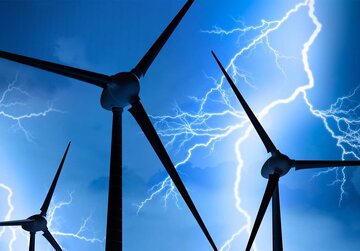
Electrotechnical standardization in Austria
What are standards? Why are they important and how do they come about? We offer support by providing relevant information and basic definitions related to standardization.
You can also learn more about the regulatory framework and the process of developing standards.
Overall, the Austrian collection of electrotechnical standards contains some 6,500 standards. OVE Standardization actively represents Austrian interests in international standardization – together with experts in business, science and research as well as authorities and consumers.
| OVE standard | Normative document drafted or adopted by an OVE technical committee. The development of an OVE standard is subject to consensus and public enquiry rules. EN series: Mandatory adoption of European CENELEC standards into the national collection of standards. E series: Nationally developed standard or adoption of a European harmonization document or an IEC publication. TS/TR series: National adoption of a technical specification or technical report published by CENELEC or IEC. |
| OVE supplement | Document with additional information on an OVE standard, such as recommendations regarding selection criteria or possible applications. Additional normative specifications may not be made. Supplements may not replace necessary amendments or additions to OVE standards. |
| OVE technical specification | Normative document containing technical requirements or instructions prepared by a stakeholder group. OVE technical specifications offer the possibility to publish new normative requirements within a short space of time in order to be able to respond more quickly to the demands of the market. An OVE technical specification must not contradict an OVE standard. |
| OVE technical information | Brief practice-related explanation of a standard, standard series or OVE technical specification. When revising the standard or OVE technical specification, explanations provided in the technical information must be taken into account. Technical information must not substitute necessary amendments or additions to OVE standards. |
The OVE Standardization department at OVE is the Austrian centre for electrotechnical standardization and thus constitutes an essential interface between Austria’s economy, industry, trade and commerce, authorities and consumers on the one hand and the international and European standardization organizations on the other.
As part of OVE's legally enshrined mandate to develop electrotechnical standards, OVE Standardization coordinates the development of national standards for electrical engineering, the adoption of European – and where necessary international – standards into national policy as well as the voting procedures that precede the publication of standards.
To carry out these tasks, OVE Standardization supervises the Austrian committee members engaged in standardization activities in 15 technical committees and approx. 100 technical subcommittees and working groups. These bodies are open to all interested parties and are composed of representatives of the industry, trade and commerce, the authorities, science and research as well as consumers. This ensures that all the different interest groups participate in the standardization activities and in decision-making.
As an official member of the international and European electrotechnical standardization organizations IEC and CENELEC, OVE and its OVE Standardization department are actively involved in international and European standardization work as representatives of Austria. First-hand information, the possibility to assess trends and having a say beyond our borders are some of the advantages for the Austrian economy associated with these memberships.
"Standard-compliant" behaviour places very high demands on responsible engineers. The skills needed, in addition to technical competence, are robust and up-to-date knowledge of the state of standardization, as well as of legal context, administrative aspects and the associated precautions.
OVE Standardization offers assistance by providing basic information. Whether by supplying information about new releases (drafts, publications) in the OVE association journal e+i and on the website www.ove.at/ove-standardization, with lectures, "in-house" training or by offering individual consultation on the phone.
Range of services
- Participation in the European and international standardization bodies as representatives of Austria.
- Assistance and coordination of national standardization bodies as a basis for preparation of the Austrian position and – if no European and international standardization is planned – development of purely national electrotechnical standards.
- Coordination of the public enquiry for all national, European and international draft standards and coordination of the publication of national electrotechnical standards.
- Information and advice on all the national electrotechnical standards published to date.
- Information and advice on all the European and international documents adopted or under development in the electrical engineering field.
- Information and advice on the Electrical Engineering Act and the associated ordinances.
- Information and advice on the directives of the European Community.
- Development of all national electrotechnical standards.
- Development of all national electrotechnical draft standards.
- Sale of European and international publications as well as national regulations in cooperation with Austrian Standards.
Technical committees (TC)
A TC is a body approved by the OEK-AK (Committee of Action of the Austrian Electrotechnical Committee) with the objective of developing national electrotechnical standards, monitoring the development in its field and consequently adapting already established national electrotechnical standards, commenting on European or international working documents and draft standards as well as participating in similar bodies in European, international or other national standards organizations.
A TC can form technical subcommittees (TSCs) or working groups (WGs) to discharge its duties.
Technical subcommittees (TSC)
A technical subcommittee (TSC) is a body established by the TC for subareas of its field of activity or of its standardization project with the aim of supporting the TC in the discharge of its duties. TSCs are bound by the decisions of the TC. The rules applicable to the TC, in particular with regard to its composition, apply accordingly to TSCs.
Working group (WG)
A WG is a body established by the OEK-AK, TC or TSC with the aim of handling specific technical parts of the respective remit, if applicable for a limited period of time, and/or of elaborating the TC’s standardization projects.
OVE workshops
An OVE workshop is a body approved by the OEK-AK with the objective of preparing electrotechnical reference documents for a specific subject area, monitoring developments in its specialist field and consequently modifying any reference documents already created.
OVE Standardization Organization Chart
Regulatory framework for standardization
The activities of OVE Standardization are of public law nature and are conducted within the scope of the Electrical Engineering Act and the associated ordinances issued. According to § 16a and § 19 Electrical Engineering Act 1992, the OVE is the official national electrotechnical standardization organization and is therefore the Austrian member of CENELEC and IEC.
| 2020 | Electrical Engineering Ordinance 2020 – ETV 2020, Federal Law Gazette II No 308/2020 |
| 2017 | Amendment to the Electrical Engineering Act 1992 – ETG 1992, Federal Law Gazette I No 27/2017 |
| 2015 | Amendment to the Electrical Engineering Act 1992 – ETG 1992, Federal Law Gazette I No 129/2015 |
| 2010 | Amendment to the Electrical Engineering Ordinance 2002 – ETV 2002/A2, Federal Law Gazette II No 223/2010
Electromagnetic Compatibility Ordinance – EMVV 2015, Federal Law Gazette II No 22/2016 |
| 2006 | Amendment to the Electrical Engineering Ordinance 2002 – ETV 2002/A1, Federal Law Gazette II No 33/2006 |
| 2002 | Electrical Engineering Ordinance 2002 – ETV 2002, Federal Law Gazette No 222/2002 |
| 1992 | Electrical Engineering Act 1992 – ETG 1992, Federal Law Gazette No 106/1993, Federal Law Gazette I No 136/2001 |
| 1983 | Amendment to ETG 1965, Federal Law Gazette No 662/1983 |
| 1965 | Electrical Engineering Act – ETG, Federal Law Gazette No 57/1965 Regulations and standards are declared binding in the subsequent implementing ordinances, in line with technical progress. The OVE is the competent authority for the development of electrotechnical regulations. |
| 1957 | Re-appointment of OVE to create a standards organization for the development of electrotechnical regulations and standards. |
| 1945 | OVE begins publishing electrotechnical regulations. This work is later taken on by the Federal Ministry for Trade and Reconstruction. However, this task ultimately exceeds the authority's resources |
| 1920 | Electrotechnical safety was already declared a matter of federal law in § 10 of the First Republic’s constitution. |
| 1883 | The Austro-Hungarian Statthalterei or Stateholder’s Chancellery issues a Konzessionsverordnung or concession ordinance requiring previous technical knowledge for the installation of electrical systems and referring to the Regulative or rules of the Vienna Electrotechnical Association. |
| 1883 | In an effort to take responsibility for its own activities and their impact, the association begins work on rules, referred to in German as Regulative, under the leadership of the president of the Vienna Electrotechnical Association, Professor Josef STEFAN and Mr. von WALTENHOFEN. These encompass current knowledge about the safe production, transmission and use of electrical energy in the interest of professionals and consumers. |
History of electrotechnical standardization in Austria
| 1883 | 5 March, founding assembly of the Vienna Electrotechnical Association (EVW), known today as OVE, on the occasion of the International Electrotechnical Exhibition in the Rotunde. |
| 1883 | Concession ordinance § 1 Requirement that commercial producers of systems with the purpose of generating and conducting electricity hold a licence to be issued by the regional authority. § 5 Reference to the future announcement of regulations referred to as Regulative in German at the time (today: Bestimmungen or rules). |
| 1887 | Initial work begins on safety regulations in what was called the Regulativkomitee (regulatory committee) in the EVW. Publication of the draft with a request for comments (today: public enquiry). |
| 1888 | First EVW regulations completed. They are adopted during the EVW’s general assembly. |
| 1901/02 | First EVW regulations are recognized by the Lower Austrian Stateholder’s Chancellery of the Austro-Hungarian Empire and the Vienna District Administration (today: declaration of binding effect). |
| 1906 | Foundation of the IEC (International Electrotechnical Commission). Austria is a founding member. |
| 1909 | EVW regulations are adopted by the Ministry of Public Works of the Austro-Hungarian Empire. |
| by 1938 | EVW 1 to EVW 44 in effect. |
| 1946 | Foundation of the CEE "International Commission for Conformity Certification of Electrical Equipment". |
| 1953 | Austria becomes a member of the CEE. |
| 1958 | Initial talks between the EC countries on the harmonization of electrotechnical regulations. The CEE establishes the colour combination green-and-yellow to identify the protective conductor. |
| 1959 | Establishment of CENELCOM, "Comité Européen de Coordination des Normes Electriques dans le Marché Commun", European Committee for Electrotechnical Standardization in the EEC. Goal: Establishment of harmonized standards to remove trade barriers. |
| 1960 | Establishment of CENEL, "Comité Européen de Coordination des Normes Electriques”. Goal: Analysis of the electrotechnical regulations of the IEC regarding the extent to which these satisfy the criteria for inclusion into EEC and EFTA countries. Its members are the countries of the EEC and Austria, Denmark, Norway, Portugal, Sweden, Switzerland and Great Britain on the EFTA side. |
| 1961 | Establishment of CEN, "Comité Européen de Normalisation”. Responsible for standardization in the non-electrotechnical field; its members are EEC and EFTA countries |
| 1972/73 | Establishment of CENELEC, "Comité Européen de Normalisation Electrotechnique" by merging CENEL und CENELECOM. Austria is a founding member. Membership is initially limited to EC and EFTA countries. In later years, preparations are made for an eastward enlargement. |
| 1973 | The EC's Low Voltage Directive introduces the principle of defining general safety objectives and of the general reference to standards. |
| 1979/80 | Dr. SAILER, first Austrian Vice-President of CENELEC. |
| 1985 | Commission Decision "New Approach" to standardization. Guidelines in accordance with this approach define general safety objectives; EC and EFTA mandate CEN and CENELEC to develop suitable standards. |
| 1996 | On 1 January, Mr. WANDA/Austria assumes the office of CENELEC president. His two-year term of office is subsequently extended for another year, constituting an exception to the internal regulations. |
| 1997 | The CENELEC general assembly decides to admit the Czech Republic as a full member. Another application for admission is presented by Hungary. |
| 1998 | IEC and CENELEC increase the use of electronic means of communication for their standardization work, e.g. electronic voting systems on the internet and work group servers for technical bodies. The cooperation agreement concluded between the OVE and the ON (Austrian Standards Institute) of 15 July 1998 redefines electrotechnical standardization in Austria. The OVE's technical committees are responsible for the development of electrotechnical regulations and standards, and their work complies with OEK's Internal Regulations. |
| 2001-2009 | As a result of the admission of new states into the EU, CENELEC gradually accepts the national standardization institutions of the following countries as full members: Malta, Hungary, Slovakia, Estonia, Latvia, Lithuania, Poland, Slovenia, Cyprus, Romania, Bulgaria and Croatia. |
| 2009 | OEK is certified according to ISO 9001. |
| 2010 | Publication of the Standardization Strategy 2010. |
| 2016 | Standardization Strategy of the Austrian federal government. |
| 2017 | Amendment to ETG 1992, OVE is the Austrian electrotechnical standardization organization and has a legal mandate to represent Austria in IEC and CENELEC. |
| 2019 | Publication of the updated installation rules OVE E 8101; presentation of OVE's standardization strategy. |
| 2020 | Publication of the Electrical Engineering Ordinance ETV 2020. |
| 2021 | Austria is simultaneously represented on the steering committees of both CENELEC and IEC for the first time. |
| 2022 | With experts elected to the IEC Board, the IEC Standardization Management Board, the IEC Business Advisory Committee, the IEC Diversity Advisory Committee and the CENELEC Administrative Board, Austria is more strongly represented in international electrotechnical standardization than ever. |





